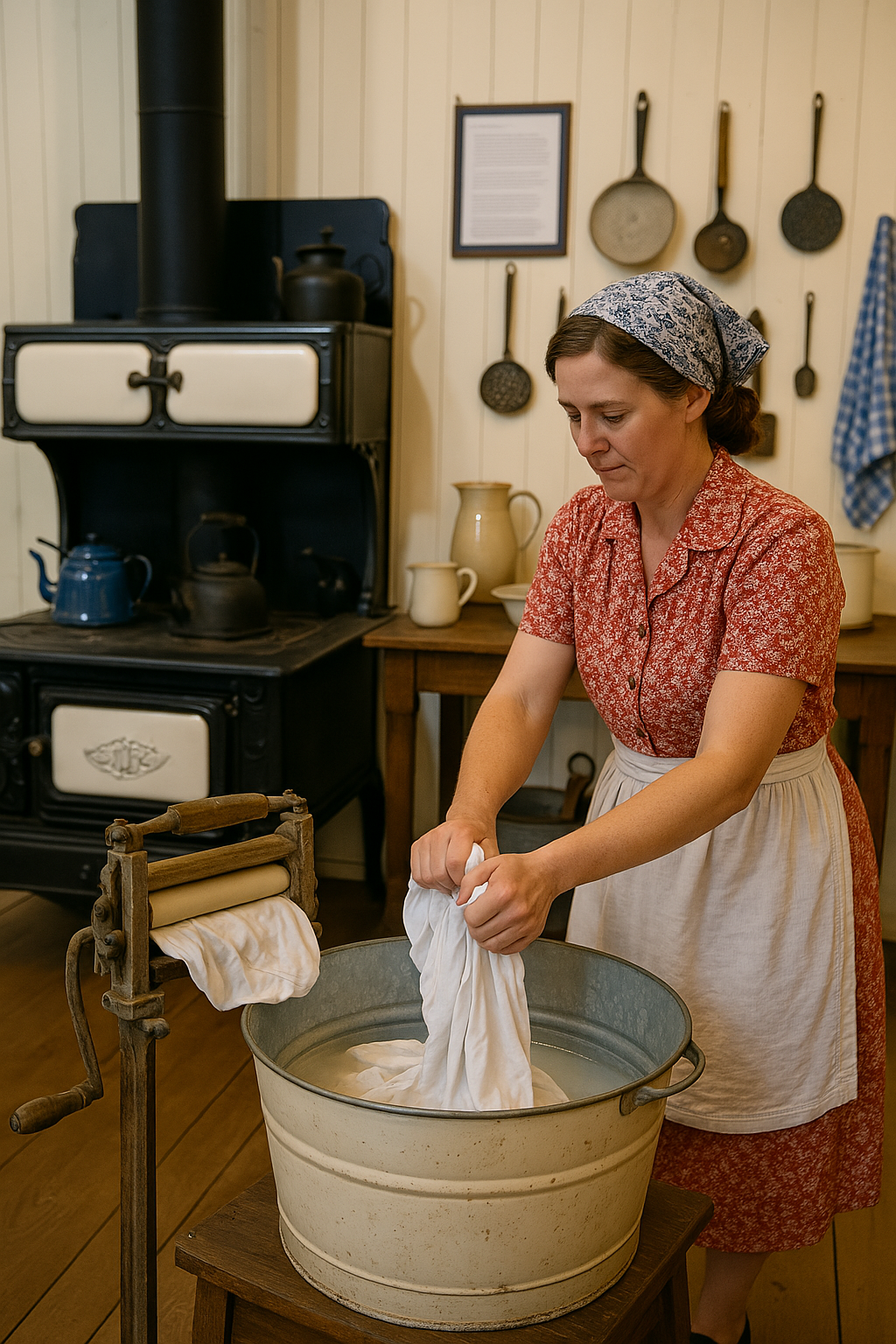
In a fast-paced modern world, the BC Farm Museum in historic Fort Langley offers a gentle trip back to a simpler time. The unassuming museum is a treasure trove where “the past greets the present” through stories and artifacts from British Columbia’s early farming days. Walking through its doors, you’re surrounded by echoes of pioneer settlers of the Fraser Valley – a reminder that not so long ago, nearly 90% of people lived on farms rather than in cities. For those who haven’t yet visited, this light and sentimental journey into our rural roots may be just the inspiration you need to explore this local gem.
Early Agriculture in British Columbia
Agriculture was the heart of community life in early British Columbia. Families worked from dawn to dusk in the fields, and towns grew up around farming communities. The Fraser Valley, where Fort Langley is nestled, was especially known as a rich agricultural hub. The BC Farm Museum was established over half a century ago with the mission to preserve these pioneer farming stories and tools for future generations. Today it holds the province’s largest collection of pioneer and agricultural artifacts, with over 6,100 historical items spanning farm equipment and everyday life on display in two big barn-like buildings and an outdoor yard. Each artifact – be it a plow, a butter churn, or a battered milk can – whispers a bit of the province’s farming heritage.
The Warmth and Simplicity of Rural Family Life
A vintage wood-burning kitchen stove and old appliances recreate the cozy atmosphere of a farmhouse kitchen. The museum lovingly showcases the simplicity of old-time rural family life. Visitors can peer into an era before electricity, imagining lamplight and wood stoves as they examine wooden ice boxes that kept food cool with blocks of ice, long before modern refrigerators. In one corner, an old wringer washing machine stands as a testament to the labor of washday Mondays, when water was hauled and clothes were squeezed dry by hand. There are hand-crank sewing machines and heavy irons that had to be heated on a stove – everyday household items that today seem like relics from another world. These homey artifacts capture the warmth of a bygone family farm kitchen, where everyone had chores and families spent evenings together by the hearth. Older visitors often find themselves reminiscing over these displays, recalling childhood moments and “remembering what life was like as a kid” in those simpler times.
Treasures of BC’s Farming Heritage
The collection at the BC Farm Museum is remarkably comprehensive – practically a small village’s worth of history under one roof. Some unique highlights to look out for include:
- Horse-Drawn Vehicles: Beautifully restored horse buggies and carriages that once rolled down country lanes, including one of the last milk delivery wagons used on Vancouver’s streets (proudly painted with the old Dairyland dairy logo). These wagons hark back to an era when milk and eggs were delivered to your doorstep by a familiar neighbor driving a horse-drawn cart.
- Antique Home Appliances: A collection of ingenious old appliances that served farm families – from a foot-pedal treadle sewing machine to a cast-iron cook stove complete with kettles and pans. There’s even a tomato sorter and an egg grading machine used to prepare farm produce for market. Seeing these devices in action (often demonstrated by volunteers) shows how our grandparents managed tasks with simple tools and lots of elbow grease.
- Vintage Farm Machines: An array of vintage tractors, plows and steam engines that trace the evolution of farm technology. You’ll find massive steel-wheel tractors from the early 1900s alongside later gasoline models – some so rare they’re seldom seen outside of the museum. One impressive exhibit is a 1910 threshing machine used for harvesting grain, its belts and wood panels lovingly restored. High above, BC’s first crop-duster plane, a bright yellow Skyway Tiger Moth biplane, hangs from the rafters – a dramatic reminder of how innovation eventually took to the skies.
- Curiosities and Oddities: The museum even holds a few surprises from farm lore, like a two-headed calf (preserved from a calf born in 1980) which never fails to astonish the young and old alike. It’s a whimsical reminder that farm life could be full of the unexpected. You’ll also spot coal oil lanterns, old blacksmithing tools (including a gigantic anvil sculpture), and a display of World War I cavalry saddles that connect local farming history to global events.
Each of these artifacts, whether humble or extraordinary, is presented not behind distant glass but often up-close, as if inviting you to imagine the hands that once held these tools and the lives they were part of.
The Charm of Vintage Farm Equipment
A horse-drawn carriage on display evokes the days when horsepower literally meant horses. For many visitors, the old farm equipment is the star of the show – radiating a peculiar charm with their aged metal and wood. The museum beautifully illustrates the transition from horse power to engine power on the farm. In one exhibit, a polished Model T Ford tractor conversion stands beside an elegant horse-drawn plow, symbolizing the leap from reins to steering wheel. Across the yard, antique tractors of all shapes and sizes rest like loyal workhorses put out to pasture. Tractor enthusiasts will be in heaven here: the museum’s second building is entirely dedicated to row upon row of antique tractors, from early 20th-century Titans to mid-century Farmalls, each with its own story. Many of these machines have been painstakingly restored to their former glory by volunteers, and on special occasions they even roar to life. (In fact, a few of these tractors proudly chug down the road in Fort Langley’s annual May Day Parade, delighting crowds with a moving slice of history.) It’s easy to appreciate the ingenuity and craftsmanship of these old rigs – all burnished brass, iron wheels, and the unmistakable scent of old engine oil – a far cry from today’s computerized farm equipment, yet enduringly captivating in their simplicity.
Connecting Generations to Their Roots
One of the most heartwarming aspects of the BC Farm Museum is how it bridges generations. The museum is entirely run by passionate volunteers, and their personal touch is evident at every turn. They are often on hand to share anecdotes, answer questions, or even demonstrate how a rope-making machine or forge would have worked. Children giggle with excitement as they follow a fun scavenger hunt through the exhibits or ride on pedal-powered toy tractors, pretending to be farmers on the homestead. These interactive elements aren’t just for show – they plant seeds of curiosity in young minds, connecting them to a past they never knew. Meanwhile, parents and grandparents stroll a little slower, perhaps transported back to memories of their own family farms or stories told by their elders. It’s not uncommon to see three generations of a local family exploring together, each finding something to marvel at. Admission is by donation, making it easy for anyone to drop in and feel welcome, and the atmosphere is relaxed and friendly, more like a community gathering than a formal museum. Visitors frequently comment on how the experience “brings back good old memories” and is a “great experience to go back to the past”. That nostalgic warmth lingers long after you leave.
Preserving the Past, Inspiring the Future
Beyond the quaint displays of butter churns and tractors, the BC Farm Museum carries a deeper message: the importance of preserving our collective heritage. By safeguarding these artifacts and the stories that accompany them, the museum connects today’s generation with the wisdom and way of life of those who came before. In an era when our food arrives from supermarkets, a visit here reminds us that not so long ago it came from the barn out back – and that real people toiled in those fields with determination and hope for the future. This living preservation of early farm life in B.C. isn’t just about nostalgia; it’s about understanding the province’s roots and the resiliency of communities built on cooperation, family, and hard work.
For residents who have yet to explore this charming museum, consider making a day of it in Fort Langley. The village’s old-time ambiance and the BC Farm Museum’s sentimental exhibits make for a perfect pairing. You can almost hear the echo of a rooster crowing or a wagon pulling up a dusty road as you wander from one exhibit to the next. Modern life meets pioneer spirit here, and the result is a gentle, joyful appreciation of how far we’ve come and the simple joys that stand the test of time. A trip to the BC Farm Museum isn’t just educational – it’s like a warm hug from the province’s rural past, sending you home with a smile and maybe a newfound pride in the hearty, humble beginnings of British Columbia’s communities. As the museum invites on its website: “Come and see us – you’ll be glad you did”. After experiencing the nostalgic charm and heartfelt history it offers, you’ll likely agree – and perhaps find yourself planning your next visit, eager to bring others along to share in the memories.
Let’s Keep Talking:
Jenny is a business insurance broker with Waypoint Insurance.
She is also a business development consultant with Impresario Partners, helping Canadian Business expand overseas.
She can be reached at 604-317-6755 or jhansen@waypoint.ca. Connect with Jenny on LinkedIn at https://www.linkedin.com/in/jenny-holly-hansen-365b691b/. Connect with Jenny at BlueSky: https://bsky.app/profile/jennyhollyhansen.bsky.social
Let’s Meet Up:
Jenny Holly Hansen is a cohost with Chris Sturges of the Langley Impact Networking Group. You are welcome to join us on Thursday’s from 4pm to 6pm at: Sidebar Bar and Grill: 100b - 20018 83A Avenue, Langley, BC V2Y 3R4
Tags: #Jenny Holly Hansen #Fort Langley, BC #BC Farm Museum #Agriculture #Vintage Farm Equipment

